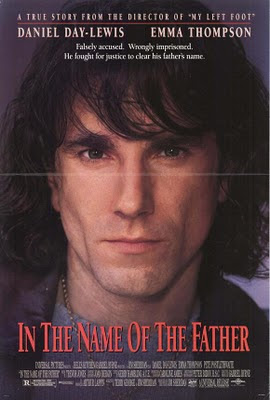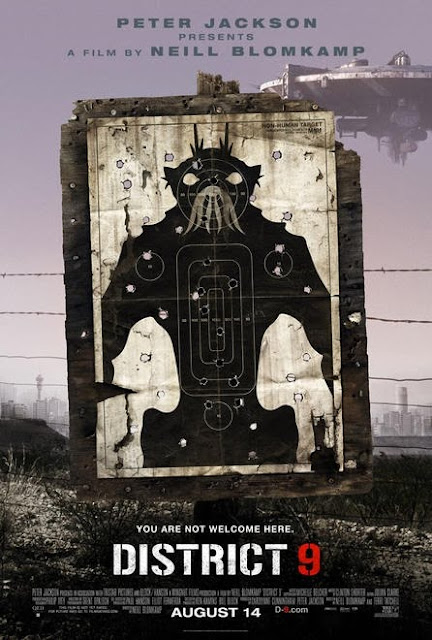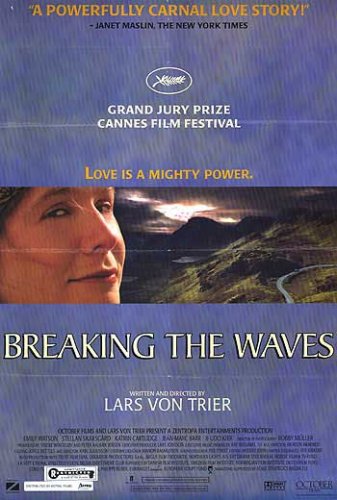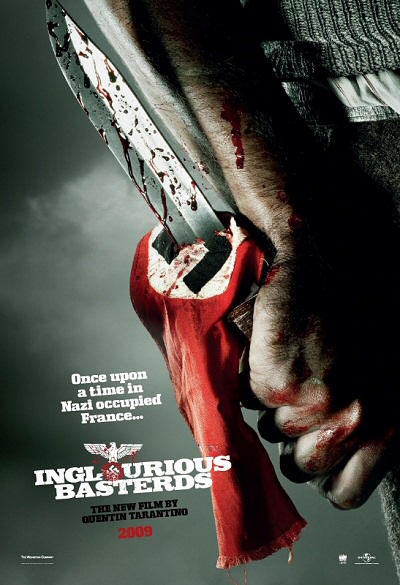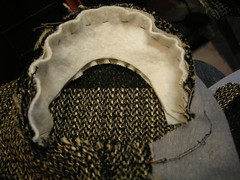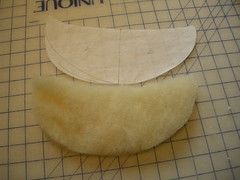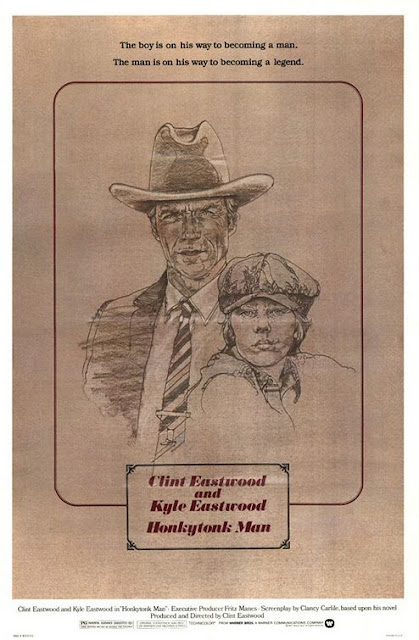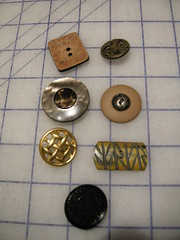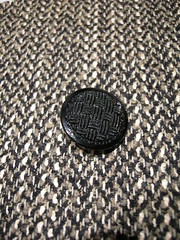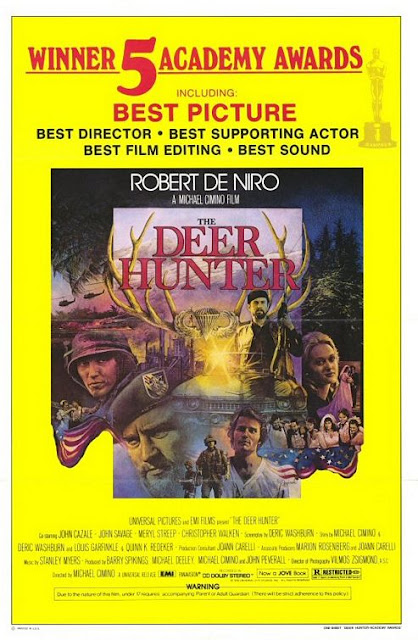Monday, May 31, 2010
Cleopatra (1963) Directed by Joseph L. Mankiewicz
Nick:
I never understood the attraction Elizabeth Taylor had for Richard Burton. Cleopatra is the movie where their on/off relationship kicked into gear. I guess I never really got Burton. Overacting, beer gutted, a bloated looking man. At this time you would think Liz could have had anyone.
I was fascinated to watch Cleopatra again because the stories of its extravagant, studio bankrupting production are legendary. The story normally ends up that with all the millions spent the film is not very good. That's actually not true. Yes, it's overlong, but it stands up pretty well after all these years of neglect. It's definitely not the film to top all films as the studio claimed. The beginning of the end of the old Hollywood studio system starts here. Despite all these expectations and unreasonable claims, Cleopatra works.
The story of Egyptian Queen Cleopatra (Taylor) and her doomed Roman lovers, Emperor Ceasar (Rex Harrison) and his protégé Mark Antony (Burton) is as good looking as any picture out there. The passage of time has been good to the lavish sets, wonderful costumes and color cinematography. So, some of the the money on show was well spent. It's a wordy picture with a lot of interiors that gives it a theatrical feel rather than creating a cinematic landmark. The acting is mostly excellent though of the stiff 40's variety. It must have felt out of date at the time of the films release to see actors recite their lines like this.
Still, stiffness is replaced by intensity and seriousness, and the main draw, Taylor's cleavage. In a variety of amazingly colored costumes the Taylor cleavage is displayed at every given opportunity. Taylor even has a full naked body massage and is bathed in milk. This is a sexed-up Cleopatra, and if there is nothing as jaw-dropping in Taylor's sexiness as the beach scene from Suddenly Last Summer, this certainly gives Cleopatra the required 60's groove the stiff script does its best to kill. Taylor is the thing to watch here.
From my very early memories of being bored with this film as a child, I really enjoyed it as an adult.
Not in the league of Kubrick's Spartacus, this is still more watchable than say, Gladiator, and far sexier.
Astrid:
Before we spent 3 nights watching Cleopatra, we had spent many nights watching the extras. We knew of the sprawling budget, Taylor's one million deal, her pneumonia, the love affair, the many countries used as locations, and we got a sense that somehow this film was a failure.
When we got to the movie, it seemed entertaining enough: there was the huge scale of the visuals, the colors and light, and the leading actors, especially Liz Taylor as Cleopatra. But were we watching a story about history and the fascinating characters who ruled Egypt and Rome for some time? Or were we watching a massive Hollywood machine slowly and clumsily churning ahead? Unfortunately, as our evenings with Cleopatra added on, I'm inclined to see it as the latter. I was no longer interested in the narrative, its repetitions and interpretations.
During the film there was much traveling between Egypt and Rome, but the movie was always cut from one static position to the other, thus never creating a natural flow and tension which follows from movement between places.
In this version of events, Cleopatra ruled with cleavage and was a kind of love addict. This view of her motivation is of course a necessary Hollywood interpretation, but I would be more fascinated to see her character as a purely power greedy ruler without the weakness for love. This would be upsetting for 20th century portrayals of women. Historically speaking, the notion of romantic one-on-one love did not exist in the world of Cleopatra.
The Egyptian dresses á la 1950s, which Liz Taylor sports courageously all through the four hours, seem always to be busting open while digging into her abdomen and lungs. I sympathize with the pain Taylor is going through here. The least she could get for her troubles was an alcoholic Richard Burton to nurse and love her in a rugged way.
A potpourri
First, I'm sorry for being absent - last weekend we were entertaining house guests and then Mother Nature decided that we should all be reminded what it is like to suffer through a heat wave (in May!!). So not much sewing has been going on here in the Nation's Capital, and since this is a sewing blog, there hasn't been anything to blog about.
Second, I have now finished the woolly skirt to go with my woolly jacket which I could only model today because Mother Nature decided that today would be slightly overcast with more seasonable temperatures. Needless to say, I won't actually be wearing it for months until Mrs. Nature returns us to the fridge. (If any of you notice me tending to want to sew tailored wool suits next spring, could you pipe up to tell me I'm falling into that trap .... AGAIN?? It would be a great service to the Sewing Lawyer to be reminded that the seasons do change; she seems to forget annually.)
So here it is - the completed ensemble. I am going to love wearing it!
The skirt is a reprise of the high-waisted skirt I made recently. I am thrilled with how it looks and, more importantly, with how comfortable it is. Remember I added an inner structure with 4 pieces of spiral steel boning? I did it again and it is like magic, I tell you - the waistband is not tight but it doesn't flop down, ride up, twist around my waist, or do anything it is not supposed to do. Totally secure, totally comfortable. Boning rules! The next time I run into this stuff, I'm stocking up.
This one was made in identical fashion, but I used a sturdy muslin for the inner structure. It is lighter and more flexible but will do the same job.
 So here's the skirt with high waist revealed (worn with my recently-completed Jalie lace T).
So here's the skirt with high waist revealed (worn with my recently-completed Jalie lace T).The wool fabric almost totally hides the princess seams in the skirt and waistband, and I like how the lower edge of the waistband is visible mainly as a change in texture.
Last, in other sewing news, I'm working hard on my Kay Unger Dress (Vogue 1182). I completed a muslin which was blissfully free of bad surprises (in other words, all the usual things had to be done, including taking 2 cm out of the front neck length).
I have purchased the most amazing silk dupioni for this dress which shall be revealed in the fullness of time. So far, the dress is cut out and underlined with silk organza. I'm going back to it now.
Thursday, May 27, 2010
In The Name Of The Father (1993) Directed by Jim Sheridan
I have no real knowledge about the troubled story of Northern Ireland, mostly I have just seen movies about it. I claimed to have seen In The Name Of The Father as well, but to be honest this was my first time! Belfast and Daniel Day-Lewis just seemed like such familiar concepts.
In The Name Of The Father is one of those meaty and filling portions of cinema with the right proportions of great acting, a real and shocking story, anxiousness, anger, family ties, genders, hippies, drugs, crooks, prison time, torture and finally change. I can even forgive Emma Thompson's overly mumsy look just this once.
Daniel Day-Lewis plays a young son of an Irish family who is sent to London to get away from the looming IRA, and away from his petty crime and poverty in general. There he finds the pleasures of a big city for a brief moment before returning home rich with stolen money. In the first half of the movie Gerry's (Daniel Day-Lewis) leather jacket, shirt and jeans combination gives him a rock'n'roll edge.
Day-Lewis acts with pleasure and some of that youthful unpredictability, which brings to mind Robert De Niro in Mean Streets.
Yet, most of the film Gerry spends in prison because he is wrongly accused of the IRA bombing of a pub. Gerry and his father (also put in prison for terrorism) share a sell most of the time. There they have plenty of time to go over their relationship from early childhood onwards. Finally, the transformation of Gerry takes place and frees him from life in imprisonment – he accepts help.
The legal system is yet again abused by those with power, while innocent people suffer and lose their lives – sacrifices to save face. Black and white. But so life appears sometimes.
Nick:
As recently as last week, Elvis Costello pulled out of shows planned in Israel because he objects to the way Israel has behaved towards Palestine. I can't really argue with Elvis, one wonders why he booked the shows in the first place. On the same principle, we can soon expect Elvis to condemn the USA and UK for the invasion of Iraq and the ongoing occupation of Iraq and stop playing shows in those countries too. Yeah, right. Oh, the contradictions and the controversies. In a sense, this highlights the question: whose side are you on? Is there anyone left to side with? I'm not so sure anymore.
I mention all this, because In The Name Of The Father concentrates on another aspect of recent British history that the English should not be so proud of. I remember the Guildford pub bombing of 1974 and the IRA terrorist mainland campaign, I was 8 at the time. There was genuine fear that, growing up in that area of suburban London where I'm from, you could easily become a victim of an IRA bombing. There was a sense of anti-Irish feeling in England. One of the best films to deal with The Troubles, In The Name Of The Father focuses on the true story of Gerry Conlon who is coerced by the police into an admission of guilt (although innocent) for the IRA bombings. His father and other members of his family are imprisoned too, Conlon tries to clear his and his father's name and regain his freedom.
Jim Sheridan directs the picture clearly and energetically. Most of the plaudits go to Daniel Day-Lewis who turns in one his best performances. In this film Day-Lewis is up there with the best of De Niro and justifies the claims some have made that he's the actor of his generation. Day-Lewis is well supported by Pete Postlethwaite who plays Conlon's father Giuseppe.
Although floored, this film is moving and at the same time angering. What happens to Conlon and his family is beyond appalling, but it makes you realize this kind of injustice is permanent and widespread in so called democratic societies. A brilliant film, which bristles with indignant power and anger.
Is the Colon Free Trade Zone for you?

COLON FREE ZONE MULTIMODAL LOGISTICS CENTER OF THE AMERICAS
About a year ago, the Management of the Colon Free Zone, together with the Inter-Oceanic Region Authority, the Directorate of Civil Aeronautics and the Maritime Authority of Panama, started an ambitious project to turn the Colon Free Zone into the largest Multimodal Logistics Center of the Americas. This project includes the development of multimodal transportation and logistics services for Free Zone in the Coco Solito, France Field and Telfers areas, covering the use of the adjacent cargo transportation centers such as the maritime ports of Manzanillo Internacional Terminal, Colon Ports Terminal, Colon Container Terminal, Panama Ports, the Panama Railroad and the Enrique A. Jimenez Airport at France Field.
Background
At the beginning of the year 2000, representatives of each one of the entities involved in the project’s development gathered together in a meeting and approved the establishment of a technical commission to design and draw up the conceptual planning and development scheme of the areas making up the multimodal center. Apart from agreeing that there should be a conceptual plan for the reverted areas, the port, airport and railroad systems, and an integral segregated zone promoting the development of a logistics center for trade, services, transportation and industry, the project’s vision was defined, as well as the actual borders of the expansion area.

The Reasons behind the Project
The project was carried out, considering several factors that directly affected the efficiency of the center and consequently the internationalization of the production, the technological and regional economic changes. The search for an optimization of the efficiency in the means of transportation and the new modalities of world trade, are important to maintain the quality of the business undertaken in the Colon Free Zone.
The transfer of merchandise from our territory to the rest of the Americas and the rest of the world, together with strengths like our geographical position, the dollar as legal currency, the financial and insurance center, forces us to maximize all our other resources of the reverted areas, ports, highways, railroads and airports to ensure a site with excellent cargo services generated from this trade center.
The conjunction of all those indicated strengths make all users and customers of the Colon Free Zone to keep up the highest international competitive levels, reducing production, distribution, marketing and logistics costs in general and especially transportation efficiency. As a consequence, the reliability of delivery terms and the frequency of the services provided would also improve, so that this sector in the free trade, industry, transport, services and logistics zone would become the largest in the Hemisphere.
This would be an effort in enlarging and improving the currently existing facilities and infrastructure in the Colon Free Zone, by the private as well as the public sector in order to achieve a common benefit.
Other Reasons
The Colon Free Zone expansion and Multimodal Logistics Center Project is not only linked to transportation, but it is rather more of a strategy to improve the goods and services supply chain as well as looking to achieve an optimal competitive level towards the latest modalities and requirement of world trade, making the real difference between temporary users and permanent and satisfied customers.
-
Development of multimodal transport for world trade.
-
Establishment of a customs storage and distribution center.
-
Installation of guard houses to check merchandise entering and leaving the Multimodal Center.
-
Establishment of Hi-Tech industries and, light manufacturing companies, taking advantage of a part of the reverted areas.
-
E-Commerce development opportunities.
-
Private investment for more than US $700 millions dollars.
-
Enhanced competitiveness upon becoming a logistical center for trade, service, industry and transport and its consequent positioning in every sphere world-wide.
-
Development of a new model strengthening international trade activities.
-
Improvement of public services and utilities.
-
Increase tourism.
-
Increase in national and foreign investment in the Colon region area.
-
Generation of thousands of jobs.
REQUIREMENTS TO OPERATE IN THE COLON FREE ZONE
General Rules and Regulations
Pursuant to Law-Decree 18 of 1948, corporations operating in the Colon Free Zone must comply with the following requirements:
-
No minimum investment capital requirement
-
No business license required
-
The following documentary evidence is required:
Articles of Incorporation, Bank and Commercial references.
-
Employ at least five (5) local workers
-
Re-Export at least 60% of the imported merchandise
-
Pay rent in the first five days of every month.
Management will collect a surcharge at an annual rate of 10% on late payments. If the client is more than two months behinds, the Operating code, it will not be possible for the company or corporation to operate in the Colon Free Zone.
-
Report the commercial movements of all the merchandise entering and leaving the Free Zone, on the approved forms at the time of the operation.
Tax Benefits
-
0% Tax on Export Profits
-
0% Duties and Quotas on Imports and Exports
-
0% Billing Duties
-
Very Competitive Costs
-
Immigration visas for executives
Importer Advantages
-
To be able purchase IN A SINGLE PLACE an excellent range of products
-
With Credit Facilities
-
With dispatching in less than 24 hours
Exporter Advantages
To have access from one site in the Heart of the Americas to consumers in:
-
The American Hemisphere
-
Europe
-
Asia
-
Africa
-
Australia
-
Ship Chandlering Services
| WAYS TO SET UP OPERATIONS IN THE COLON FREE ZONE | |
| Lease Agreement Operating Costs: A, C, D and E | Urbanized Areas France Field $0.35 m2 Colon $0.50 m2 Non-Urbanized Areas $0.20 m2 (The customer assumes the cost of urbanization. None available) |
| Building Lease Agreement Operating Costs of a property in the Free Zone: A, C, D and E Operating Costs of a private property: A, B, C, D and E | Free Zone Property Colon: $2.40 France Field $1.75 Coco Solo $1.65 Private Property Rent agreed upon between the parties, authorized by the General Manager’s Office based on resolution Nº 04-92 dated 25 March 1992. Operating Permit |
| Representation Agreement Operating Costs: A, C, D and E. | Percentage (For storage, handling, etc) Agreed upon between the parties |
| Public Warehouse Operating Costs: Only A and E | 0.5% of the merchandise’s F.O.B. value (Freight on board) |
A. Operating code (Annual) $200.00
Given to a Company in order to be able to make commercial transactions in the Free Zone
B. OPERATING LICENSE (Annual) $1,200.00
Given to a Company after its establishment in the Free Zone has been approved and all legal paperwork has been done.
C. RENT (Monthly)
Cost per square meter multiplied by the number of square meters, (depending on the area)
D. GARBAGE COLLECTION (Monthly)
Minimum $ 30.00
Maximum $ 120.00
E. SECURITY (Monthly $ 30.00)
Source: Colon Free Zone
For more information, contact www.laglex.com
Looted Cultural Objects Recovered in Iraq
http://www.rferl.org/content/Iraq_Says_Antiquities_Ring_Busted/2053617.html
Tuesday, May 25, 2010
District 9 (2009) directed by Neill Blomkamp
I'm writing this quite late at night after a hectic day in the studio where computer's crashed at regular intervals. My brain is quite fried. The biggest surprise for me was that Astrid wanted to watch District 9 last night. She normally steers well clear of this type of picture. District 9 was surprisingly good.
So let's start with the obvious parallels with Avatar. Jame's Cameron's epic came out just after District 9 yet both films have aliens (or deal with the unwanted outsider), both films could be classified as sci-fi and both pictures are violent. Although Avatar's themes also cover environmentalist ideals, it's strange to have two movies form a similar genre both coming from political angles. There, the similarities end. District 9's sense of fun and fast pace offer a different experience to Avatar's pompous though well meaning message. Incidentally, I think Avatar is still the better film.
It takes balls to have this movie located in South Africa and the opening seen with the Alien craft floating over Johannesburg is a cheeky nod to Independence Day. The aliens' space ship ship has broken down and the South African government start up District 9 to shelter the aliens found on the craft. The way the Aliens are depicted and treated is of course mirroring what happened during Apartheid era South Africa and for me this was as great a portrayal of the racial conflicts and problems that arise from segregation everywhere as I've seen. So, this already puts District 9 into original territory for an alien movie.
The fast editing, different film choices (from HD to video tape to film) suck you in from the off to what is a roller-coaster ride. After awhile the movie descends into a typical shoot em up display of firepower and revenge. All the characters are pretty hard to like (from alien to human) but as the film moves on you find yourself rooting for the annoying central human character (or is he?) and his finally sympathetic alien allies. I'm sure there working on the sequel already, but District 9 was a real fun blast.
Astrid:
I am generally against watching action films because they tend to bore me after the initial half an hour.
The mold for action is: present the ideas plus the events that lead to danger, then for the rest of the film just shoot and bomb, drive and run so you can hold hands in the end.
That said, I suggested watching District 9 last night, because untypically for myself, I was ready to be inspired by the fusion of human and alien DNA. I was up for imagining what happens when human rights are extended to extra-planetary beings. As human rights have continually been used to justify war and the exclusion of others has been internal to defining humanity, it is fascinating to imagine what happens when Otherness lands on Johannesburg from a spaceship.
District 9 is surprisingly imaginative and multi-faceted in its dealings with the Otherness of aliens and most of all in the way it presents human reactions to the non-human presence. There seems to be a wide acceptance of the hovering spaceship over the city, while at the same time the aliens are the newcomers and therefore it appears 'justified' to put them in shanty towns and controlled camps for the time being.
Biotechnology is at the heart of what the aliens have and humans so desperately want to develop. Weaponry, unfortunately is what humans want this technology for. What is more interesting to me, is that through an accident a fusion of human and alien DNA occurs in a man. This becoming offers us a chance of asking a line of questions about the fluidity of being defined human.
Just last week I learned that the tiniest variation(less than 1% change) on human DNA-pattern could really drastically change humanity's make-up, while right now we are over 90% made of the exact same ingredients (and yet we appear so different to each other).
Monday, May 24, 2010
A Place In The Sun (1951) Directed by George Stevens
After a conference on Gender, Nature and Culture and Rosi Braidotti's inspiring keynote speech on Saturday my response to A Place In The Sun is deeply affected.
This film is a testimony and a criticism of capitalism. It portrays the spiraling effects of love as a commodity, sex as a tool of capture, and money as a killing trap.
Poverty and religion need to be abandoned in the 1950s America for the imagined riches that come through money. In fact, to be included in the definition of humanity necessitates the desire to be well off, to be upper class, ultimately to not be in need of anything. That desire as a motivation for action leads to an ethical dilemma. Ultimately, the society and its system of law which continually constructs the American Dream and feeds this desire, electrocutes a man for desiring. He needs to be excluded from humanity.
Another matter here is the telling of a truth. Or the relativity of any truth. As a viewer of the film I believe to have seen that there was no murder, yet, in the end the convicted main character believes that unrealized desires do in fact make him guilty.
There may be a dream of movement towards the sun, but this film illustrates how the unequal situatedness of people determines their ability to advance on the path.
I could talk of love and sex, abortion, Clift and Elizabeth, but will refrain for now and just say one last thing: the loon.
Nick :
I've already waxed lyrical on an earlier post about my youthful obsession with Montgomery Clift. I ask myself why I find this film still so enduring and so fascinating.
Could it be the look? As mentioned in the extras, Stevens was a master stylist (or is that just the amazing outfits designed by Edith Head?) Montgomery Clift and a 17-year-old Elizabeth Taylor certainly have chemistry and looked good together, which makes the actions of Clift's character George Eastman all the more credible as the film unfolds. It has something to do with old-school glamor for sure.
But I think what still makes A Place In The Sun so irresistible for me is the good old class conflict portrayed, the aspiration, the American Dream going sour, the groundbreaking allusions to pre-marital sex, seeking abortions, Shelly Winters being so convincing as a dowdy factory worker, the electric chair, being Elizabeth Taylor's "pick up", Clift's method before there was method, a steady camera hand mixed with occasional vérité style, that over the shoulder shot, possibly THE romance you can't have. Finally, Clift's white t-shirt/leather jacket combination.
So, is that enough reasons for you to watch this classic?
Sunday, May 23, 2010
Changes in Consular Business Appointments at the US Embassy in Panama
Cambios al procedimiento de visas de negocio para los EEUU
If you have an urgent need for business travel, please send us an e-mail with the word "Business" in the subject line. In addition, the e-mail should include your full name, the planned date of travel, a short description of the purpose of the trip, and why it is urgent and last-minute in nature. Please note these emergency visas appointments are typically reserved for life and death situations.
___________________________________
Debido a los requisitos para procesar el nuevo formulario DS-160 para visas de No inmigrante, la Embajada de los Estados Unidos, ya no recibirá personas entrando para visas de negocios. Si usted tiene un viaje de rutina para negocios a los Estados Unidos, por favor llenar el formulario DS-160 y mandarlo electrónicamente y contacte al Banco General para una cita. Para más información detallada acerca de una cita para visa de No inmigrante, visite nuestra página de red: http://panama.usembassy.gov/non-inmmigrantvisas.html. Procuramos mantener la espera para una cita por lo menos una semana.
Friday, May 21, 2010
Thursday, May 20, 2010
Major Art Theft in Paris
When a major theft such as this one occurs, it is reasonable for investigators to presume that the crime is part of a broader plan. For instance, paintings can be used as collateral for weapons purchases or as payment for sizeable drug buys. Because it is more portable and discreet to carry a canvas worth millions through an airport rather than carrying the equivalent in cash, valuable artwork can be used to move large amounts of cash without being detected. It is also reasonable for the police to assume, in the first instance, that information or assistance may have been provided by someone on the inside of the institution. As evidence develops, the police can rule in or rule out these suspicions.
I have included a list below of the stolen paintings, and links to their images on the web. If you spot any of these artworks or have any information related to the theft, you can contact your local INTERPOL central bureau. In the United States you can report any information to the FBI via the internet at https://tips.fbi.gov.
1. "Pigeon with the Peas" by Pablo Picasso news.yahoo.com/nphotos/slideshow/photo//100520/ids_photos_wl/r2288127354.jpg/
2. "Pastoral" by Henri Matisse
www.the-artfile.nl/gallery/artists/matisse/pastorale.jpg
3. "Olive Tree near Estaque" by Georges Braque
http://d.yimg.com/a/p/rids/20100520/i/r3355612611.jpg
4. "Woman with a Fan" by Amedeo Modigliani
http://news.yahoo.com/nphotos/slideshow/photo//100520/ids_photos_wl/r2748639951.jpg/
5. "Still Life with Chandeliers" by Fernand Leger
no image found
Breaking The Waves (1996) Directed by Lars von Trier
Nick:
Another sacred cow in the shape of von Trier so soon after Tarantino. I know this film is a favorite of Astrid's. I have also admired this picture when I last saw it over 10 years ago. Since then, von Trier has annoyed me with his exploitative cinema, his clear misogyny, his very public depression, his pretentious Dogme. At the same time I love his provocation (which represent the things that annoy me), and a von Trier film in principle represents something interesting to me, even if the results tend to be disappointing. Crucially, I feel the years have been unkind to Breaking The Waves.
Once the shaky hand held camera work at the start of Breaking The Waves subsides, a very conventional film is revealed. Actually, a very over-dramatic melodrama, which is as populist in tone as von Trier's music choices which litter the two and a half hours. Emily Watson whom I thought was a revelation when I first saw this picture all those years ago, now seems to be over acting, especially during the films final reel. She's much better in Punch-Drunk Love for example, where she's not trying to say "look at me, I'm a new actress and really good". The less showy performance of Stellan Skarsgård stood out for me this time round.
The similarities between David Lean's much maligned yet underrated Ryan's Daughter are obvious, with the casting of Watson who even looks a little like Sarah Miles. Madam Bovary is an influence on both films I suspect, although remote villages and the religious context of Breaking The Waves are something shared with Lean's picture. Watson's stoning by the town's children at the end of Breaking The Waves could be taken directly form Ryan's Daughter.
But what sticks in the throat about Breaking The Waves is the realism that von Trier depicts initially, which he trades in for implausibility half way through the film. Watson's dissent into the town whore is a manipulating tactic which exaggerates the horror of Watson's situation. It is unsubtle and calculating (as much as Bambi?). von Trier is revealed as a sentimental bunny, wowing the cheap seats. It's a cop out which undermines a sometimes powerful film. This time round, after watching Breaking The Waves, instead of feeling moved, I felt a little used.
Astrid:
Breaking The Waves was one of the most important films of my teenage years. After seeing it for the first time I was silent for hours, although that's not so strange because I was often silent then for hours in good company. Then I asked my mother to make me a Bess beret and a scarf. I was meticulous about the shape of the beret.
Now, nearly fifteen years later I watched the film looking for what I had so strongly identified with in Bess. She is defined mentally ill by her family. She is a victim of a very strict religious society. She falls in love and discovers sex for the first time. She attempts to cope with her husband's sudden paralysis and dies in the process.
None of the above offers the reason why I loved this movie. Instead, it is the way Bess deals with emotions. She shows them and reacts immediately. Bess does not conform to hiding her sadness or her exhilarated happiness. The immediacy of her emotions was admirable to me, a vulnerable and frail teenager who had learned to hide her core very well. I could live intensely through Bess then.
Breaking The Waves is about goodness. It is about selflessness in the face of bigger powers. It is also about the danger of misinterpreting where those powers lie. Too much selfless good makes you weak, but at 16 I did not think much of that.
On this May 2010 viewing of Breaking The Waves I realized that this movie has contributed in me developing the thought that it is noble to not need anything for myself in life. Don't get me wrong, I was prone to thinking that way before seeing the film. Yet, it has taken me until now to understand that needing something isn't necessarily selfishness, but that needing nothing is selflessness.
Goodbye Bess, I'm going to need something now and a miracle will not be enough.
Wednesday, May 19, 2010
Inglourious Basterds (2009) Directed by Quentin Tarantino
A five day break from watching films made me willing to give anything a go, so this was Nick's chance to get me to watch something I usually would object to. Inglorious Basterds I certainly would never watch again.
Quentin Tarantino has made a b-movie with tasteless content, not enough tension or action, embarrassing acting, and too much floating referencing to the history of cinema.
I am too annoyed to go over why it is tasteless to make a joke out of Hitler. A revenge fantasy on this scale is also a lame excuse when we already had Tarantino's other films, especially Kill Bill. Then there is Brad Pitt who is still doing his Thelma & Louise role, because that's the only thing he can play – himself. Rarely have I felt this embarrassed for a millionaire. That said, there was only one acting role written for the script it seems and Christopher Waltz won an Oscar for it.
The various film history related facts and references Tarantino has inserted here are possibly the best content in this over-long piece. Yet, they seem to belong to another movie – a better one.
I am tired of Tarantino's recycling approach to cinema. He is a fan boy with a budget.
Nick:
I was at an indie rock festival over the weekend. The TV in the chalet had a great selection of movies and I caught half an hour of John Carpenter's Assault On Precinct 13 between bands. The tension, soundtrack and the look of the film confirmed what I'd always felt. Carpenter is one underrated film maker. We need some of his films on this blog. Quentin on the other hand....oh dear.
You know you're in trouble when the first name on the box is Brad Pitt. How shit is Brad Pitt? How many films has this simian destroyed? His first scene in Inglourious Basterds is Brad doing Lee Marvin in The Dirty Dozen . Yep, you got it, he can't do the accent. Tarantino however uses Pitt sparingly which is at least some realization from Tarantino.
So with Inglourious Basterds, Tarantino serves up homage to (amongst others): Where Eagles Dare, The Eagle Has Landed, any Sergio Leone Spaghetti Western, The Searchers, the films of Jean Luc-Goddard, Blaxploitation cinema, and of course the Nazi-hating Stephen Spielberg blockbuster such as Raiders Of the Lost Ark. Inglourious Basterds has an uneasy mix of super violence, poor comedy, cinema pastiche and art-house cinema pretension. Some critics have even claimed that Inglourious Basterds is feminist cinema. It's amazing what Quentin can get away with, talk about sacred cow.
His position in recent popular culture assured, Tarantino can release anything nowadays and have it labeled the work of a master. It's been a long time since Tarantino wooed us with his mighty mouth and his cinema geek charms. The excellent Reservoir Dogs was way back in 1992. Yes it was derivative and responsible for a lot of bad films that followed but it shook things up. Pulp Fiction (1994) is not great in my book, but contained some good scenes. Since then, Tarantino has been drowning in hype and bad movies. He often talks a good film. He reached his career nadir with 2007's awful Death Proof. Inglourious Basterds offered a different genre of film for Tarantino to refresh himself, the war film. He blows it.
It's not all bad of course. The opening chapter of the film looks fine. Christopher Waltz's scene stealing Nazi officer the first interesting character Tarantino has come up with in ages. Waltz is so good in this picture he deserves a better film for his talents. The liberal pillaging of Ennio Morricone from other soundtracks at least brings some quality to the proceedings.
But the casual offensiveness, shallow schoolboy humor, lack of characterization, meandering wordy script (where have the quotable lines gone?), slow slow pace, the "seen this all before but much better" quality of Inglourious Basterds means Tarantino serves up another dud. Don't believe the hype.
Monday, May 17, 2010
Responding to comments
First, thanks all for reading and being interested!
lin3arossa asked whether the internal structure meant that I would only dry-clean the jacket. Oh yes! I take dry cleaning as a given for any tailored jacket. Immersing the jacket in water would be a sure-fire way to ruin it. Wool is washable, but I have not pre-treated this fabric by washing it because the garment will never be washed. I steamed the fabric to shrink it somewhat but washing would change the hand completely, making it thicker and fuzzier. I don't want that. Further, washing any tailored garment, assuming it has an inner structure that depends on materials like those I have used, will cause unattractive lumpiness. Maybe some tailored jackets are washable. But I doubt it.
Nancy K asked about the design of my shoulder padding. Frankly, Nancy, I'm feeling my way on this one! But I don't think a really stiff layer is needed anywhere. The top layer in my shoulder area (right under the wool) is the thin cotton quilt batting. Under that is the soft wool fleece. I put it on the fused fleece mostly to give it a real base - it's not very stiff at all.
I find pre-fab shoulder pads sometimes to be too stiff, especially if they use foam for padding - their edges may poke through the fashion fabric, and they will not mold to the shape of your own shoulder. Hopefully my softer padding will.
j.kaori wanted to know if my shoulder "yoke" was meant to stabilize the shoulders. Not really. It's mainly to provide soft support for the fashion fabric to prevent my bony shoulders from poking through, and to prevent the relatively soft wool from collapsing in areas such as between my shoulder blades.
Vicki had it right when she said that "the important thing is to get the look you are after. It doesn't matter so much what you use as it is hidden." On this theory, I encourage anyone who is interested in sewing a tailored jacket to experiment with different types of shoulder padding or inner structure.
Just in the nick of time - Vogue 2770 jacket is finished!
On the plus side, it fits me really well! All that pattern adjustment really paid off.

And the shoulder shaping seems just right to me. Look how nice and square they are, but not extended at all.
I especially like how it fits at the neck and around the armscye. Narrowing the front at the shoulder level really worked!
Only one slightly negative note - this jacket has very narrow sleeves. The high armscye is wonderful and the shoulder fits very well, but wearing anything with sleeves under this jacket will feel a bit constricting. It is truly designed for that cute little top.
I guess I should try to remember how well this pattern fits - I could use it to develop other styles...
Before I move on to the next season, I'm going to finish a coordinating skirt. Up after that? My very special dress.
Sunday, May 16, 2010
Hand Sewing
For instance, I've already inserted the shoulder pads in my Vogue 2770 jacket with hand stitches as seen in this post. I like to bag the jacket body lining (without sleeves) by machine, then hand-baste the lining around the armscye of the jacket. Sewing the sleeves this way ensures the lining will not budge inside the jacket. Then, you stitch the sleeve to the lining using more-or-less invisible stitches. The sleeves likewise will never budge. If there is the correct amount of ease in the lining, all will be well.
I did this on my orange plaid jacket as you can see in this post, and I like how it looks, once done. But hand-sewing is definitely not my favorite part of sewing.
Which may also explain why I signed up for a class on PR with Susan Khalje. The class name is "Couture Hand Stitches" and we're supposed to learn these ones:
- The Basting Stitch
- Hand Overcasting
- The Catch Stitch
- The Slip Stitch
- The Fell Stitch
- The Invisible Hem Stitch
- The Back Stitch
- The Prick Stitch
- The Thread Chain
- The Thread Bar
- The Blanket Stitch
- The Buttonhole Stitch
Random information: "couture" is a pretty ordinary word in its language of origin, which is French. It simply means "sewing". "Haute couture", on the other hand, was a very formal term which designates those design houses which are formally designated as members of the French Chambre syndicale de la haute couture. According to Wikipedia, to be eligible for this they must:
- Design made-to-order for private clients, with one or more fittings.
- Have a workshop (atelier) in Paris that employs at least fifteen people full-time.
- Each season (i.e., twice a year), present a collection to the Paris press, comprising at least thirty-five runs/exits with outfits for both daytime wear and evening wear.
If only, after (virtually) rubbing shoulders with Ms. Khalje, my hand-sewing will have this je ne sais quoi too. Right now, my stitching is rather utilitarian... (and I don't much like the process either).
Jacket is almost done ...
Wednesday, May 12, 2010
Moon (2009) Directed by Duncan Jones
Along with Frank Zappa's children (Moon Unit, Dweezil, Ahmet Emuukha Rodan and Diva Thin Muffin Pigeen) Duncan Jones used to have one of the most famous and weirdest names for the son of a rock star. So, Zowie Bowie is nowadays Duncan Jones, and he directs.
I got the feeling Astrid was not so into watching this picture, feeling it would be slow and depressing. I didn't know what to expect either. Actually Moon is an odd film and fairly entertaining. Sam Rockwell gives the only real performance (unless you count Kevin Spacey's robot voice). He is great, often acting with himself. The nods to sci-fi pictures past are everywhere, especially 2001 : A Space Odyssey, Alien, Bladerunner, Dark Star & Solaris. Jones might even have caught a glimpse of The Flaming Lips Christmas On Mars picture, the Moon surface scenes certainly have a similar ambiance.
Despite the typical references Moon offers something new to the genre. This film tells more about the emotional and the psychological. At its core Moon is a film about loneliness, isolation playing tricks on the mind. The film also questions our perceptions and inceptions. It deals with everyday hum-drum life, even working on the moon can be boring. But where Moon scores most is atmosphere. At times creepy, beautiful and sad, Moon moves me. Rockwell, his face can be the stern super-strong astronaut or the geek who got left out in the cold. This is his picture. Jones could be a magpie, but I enjoyed his debut. Impressive.
Astrid:
If I was stranded on the moon I would listen to Bill Callahan and write books.
And obviously I would talk to myself, or my reflection. The distance from humanity would get to me, or is it the distance from any kind of life? The others.
I was opposed to watching this film last night because I was unwilling to deal with the loneliness a movie called Moon would depict. But after the film I was inspired.
The clone Sams wake up in the lunar infirmary nursed by a robot who has created their memories. Through a failure in the system, they realize they are not the original human Sam, but they have been created solely to stay on the moon and serve the energy business on earth. Their memories serve a corporate purpose because they motivate work and staying alive.
The question arises: are we programmed too? We are born with no recollection of where we came from. Blanks. Then slowly we are imprinted with life on earth and we collect memories and let them motivate our action. We rarely ask questions or attempt to find the secret room. We rarely question our authenticity.
An idea: we should send a philosopher to the moon, or an artist. See what they come up with instead of these religious astronauts and politicians.
Sunday, May 9, 2010
Wooolllly Goodness!
I thank you all for your valuable insight in the matter of buttons. The too-big brown button wins the informal poll, with the black glass one in second place. I will now disclose that I like the big brown button but my husband voted for the glass. I've decided to hedge my bets. One of the problems with the big one is that the button hole would be ginormous. So I'm going to use a big snap for the real closure, and the button on the outside for camouflage. Then, I can change it up if I don't like it or find something I like better.
But today's subject is luscious, slightly lanolin-y wooliness. In the matter of internal padding, I'm experimenting.
In a tailored jacket, no matter how sleek and natural the shoulder line, I think SOME padding is beneficial. This need not add bulk - even a single layer of needle-punched batting will support the shoulder area and create a smoother line (I have bony shoulders). I also like to use a fleece sleeve head. I do not buy these internal padding alternatives - I make the patterns from my jacket pattern. The general approach is illustrated here.
My Vogue 2770 jacket calls for 1/2" shoulder pads (it's a 2003 pattern), and I knew from the muslin that it did need actual shoulder pads. I have a plastic tub filled with the darned things, but I really prefer making my own.
For this jacket, I'm using a cotton quilt batting called "Warm & Natural" for the base layer of padding. It is very thin and supple. I made the pattern piece for the padding from the jacket pieces, eliminating all seams and seam allowances (this process is illustrated here). The resulting piece looks like this (neck edge and front extensions are at the top):
The neck edge will be hand sewn to the neck/collar seam on the inside, and the front edge is tacked to the dart which extends down from the neck point. The armscye edges are sewn invisibly along the armscye edge, again by hand.
 But first the sleeve head. Again, I cut it from Warm & Natural, using the sleeve cap pattern. It extends from notch to notch (well, it actually ends above the notches which seem very low on this pattern). The sleeve heads need to be in place before the shoulder padding can be installed. I used my sleeve board to steam the seam allowances and sleeve head so they will stay nicely in the sleeve cap.
But first the sleeve head. Again, I cut it from Warm & Natural, using the sleeve cap pattern. It extends from notch to notch (well, it actually ends above the notches which seem very low on this pattern). The sleeve heads need to be in place before the shoulder padding can be installed. I used my sleeve board to steam the seam allowances and sleeve head so they will stay nicely in the sleeve cap.My great innovation for this jacket is that I used luscious 100% wool batting for the shoulder padding. I came across an online vendor of wool quilt batting - Cedarview Farms. I purchased a lap size quilt batting (55" x 74"). It was very reasonably priced, I thought, and they were having a 20% off sale at the time. The batting arrived very promptly, neatly packed - loosely folded around tissue paper to keep the layers separate and then rolled. It is absolutely scrumptiously woolly - soft, light and smells faintly of lanolin.
You know that I don't knit. I also don't quilt. I bought this batting to add to my considerable stash of padding-materials (though I think it would make a pretty awesome duvet). Today I tried it for my intended purpose and I am pretty happy with the results. Here's what I did.
I cut the pad shape out of a thin fusible fleece (a Pellon product) and the wool batting. Then I "feathered" the curved edges of the pad by pulling some of the fleece away, so the pad edges will be thin and invisible inside my jacket. Once I was satisfied, I recut the shape according to the pattern.
 Then I put the fusible fleece (fusing side up) over my pressing ham and placed the wool on top. I steamed the two layers to fuse the wool lightly to the padding, and to further flatten the leading edge of the pad, as you can see on the left.
Then I put the fusible fleece (fusing side up) over my pressing ham and placed the wool on top. I steamed the two layers to fuse the wool lightly to the padding, and to further flatten the leading edge of the pad, as you can see on the left. 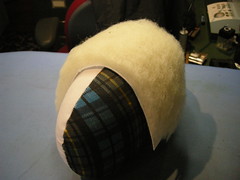 In the picture to the right you can see how thin the fusible fleece is, in relation to the wool fleece.
In the picture to the right you can see how thin the fusible fleece is, in relation to the wool fleece. 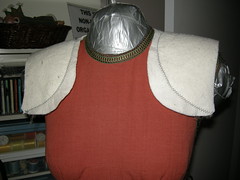 Then, I sewed this layer underneath the single padding layer shown above. I pinned the layers to ensure that they stayed curved, then zig-zagged the leading edge of the pad and used big hand stitches through all layers to loosely anchor the rest of the padding.
Then, I sewed this layer underneath the single padding layer shown above. I pinned the layers to ensure that they stayed curved, then zig-zagged the leading edge of the pad and used big hand stitches through all layers to loosely anchor the rest of the padding.To the right is the finished item from the front.
And, once installed in the jacket, this is what it looks like from the back:
Onward!
Friday, May 7, 2010
Honkytonk Man (1982) Directed by Clint Eastwood
It's Clint again. I no longer mind. I give in – to this household's clintomania. Gladly.
So this time he is the honkytonk man. The lost and heartbroken husky voiced country singer. The sympathetic alcoholic. The man who takes his nephew under his wing because it benefits him and takes him to a whore house as a reward. He also teaches the 13-year-old how to drive a car, engineer prison breaks and sip clear whiskey from the bottle. Lessons in masculinity. Again.
Significantly, this is a mild film. Mild for anyone, but especially so for Dirty Harry. There are emotions and drama, but everything is dealt with in a stroking, tingling manner rather than grasping the issues straight on. Suggestion rather than deciding for the audience. I am impressed.
So Clint is a singer and a songwriter then. He is heading for the Grand Ole Opry in Nashville to audition, but there are problems on the way, mainly that he is dying. And unlike me with pneumonia, he can't sing with TB. This is a depiction of broken dreams and having to give in. Or is it about fighting for the dreams until the end? It also romanticizes the life of a journey man, the unsettled outlaw who never fits in. There's the parallel with the characters Clint plays in his Westerns. The question is, what is so romantic about never finding your place, never stopping, especially when the outsider is a white American ultra masculine male?
Nick :
I love Clint Eastwood. From the Spaghetti Westerns through to Dirty Harry and then on to being considered a serious auteur, icon of cool, violent fascist, sexist/sexy and all the while a republican with liberal tendencies. These contradictions just add to my fascination. It has made for one of the most interesting movie careers of the modern era and at least a dozen truly great pictures.
In Honkytonk Man Clint sings! Again! This time round though, no Paint Your Wagon embarrassment. In fact, Honkytonk Man was an early sign from Eastwood that he had something else in the can. Of course before this, Clint the director had delivered a handful of pictures that to me were great : the classic The Outlaw Josey Wales, the very good Bronco Billy, The Gauntlet, and the ghostly Gothic Western High Plains Drifter which is genuinely strange yet brilliant. But Honkytonk Man is a gentle picture which gives an idea of the tragedy and sadness that would dominate later films such as Bird, Million Dollar Baby and The Changeling.
Eastwood's country singer picture looks wonderful and has a slow-burning dry humor. Kyle Eastwood (Eastwood's real son) is excellent as Eastwood's nephew while Clint's portrayal of dying country crooner Red Stovall is one of Eastwood's best turns.
This film flopped at the time, but time has improved its quality. The mainstream Superstar of the day took a left turn with Honkytonk Man, a quirky warm film that doesn't add anything to the myth of the man. It's just another piece from an amazing body of work.
Chilcott again
The Chilcott inquiry has now heard its two star witnesses, the Prime Minister and his predecessor, though we have not been promised a report before the end of this year. Already at least two questions of particular interest to lawyers have been raised, one procedural and one substantive.
The procedural issue is whether or not there should have been appointed counsel to the inquiry. Obviously it is right that the panel should be primarily composed of military and political experts. But I do not think it is merely pushing the profession’s barrel to suggest that the addition of senior counsel would have aided robust questioning of witnesses. For the inquiry to retain—or, more accurately, obtain—public confidence, raising issues will not suffice; the most rigorous cross examination of contentious points must be pursued. And that is the stock-in-trade of barristers.
The substantive question is the rather more nebulous issue of international law, and the rights and wrongs of the Iraq war thereunder.
International law
The international law question has already been authoritatively discussed in this journal, most recently by Professor Greer and Dr Tsagourias (NLJ 2010 p475) I would respectfully suggest that the comparison in their last paragraph between Iraq and Kosovo is the key point, and in fact renders much of the public debate on Iraq (and indeed the Chilcott inquiry itself) misplaced. The reason that Iraq remains in the public eye is not that there were no weapons of mass destruction (WMD), nor because there is doubt over the Prime Minister’s intentions, nor that the war was of doubtful international legality. It is because—and almost only because—the aftermath of the invasion was a fiasco.It is worth remembering that the initial invasion in 2003 was an almost unprecedented military success. The coalition achieved its stated objective of deposing the Iraqi regime in a few short weeks, with minimal casualties. The problem is that that seems to have been about as far as the pre-invasion planning ever got. The infrastructure of the country was largely destroyed or disbanded and there was accordingly little to check—and everything to encourage—the insurgency that followed.
The occupying troops were too few in number, primarily trained to fight a conventional war rather than counter-insurgency, and constrained by rules of engagement that most certainly were not going to be observed in reciprocation by the insurgents. Readers will need no reminding of the blood that was shed thereafter, and even if some significant progress has been made since the US “surge”, the cost in money and lives has been severe and even the most optimistic commentators have ceased to speak in terms of ultimate victory. That is why the public continues to demand investigation and indeed recrimination, and every aspect of the political, military, constitutional and legal steps to war remain under scrutiny.
Suppose, however, that by whatever means Iraq had been transformed almost seamlessly after the invasion into a functioning democracy with a low crime rate, no insurgency to speak of and tangible respect for human rights. The politicians responsible would now be feted as great statesmen and women, and there is no chance whatsoever that seven years later there would be any inquiry pouring over the finer nuances of international law, the AG’s advice, and precisely who knew what and when regarding WMD.
The point can reiterated by returning to the Kosovo war of 1999. Public debate regarding that war ceased fairly shortly after the conclusion of combat operations. And yet, contrary to the statements by the executive at the time, there seems little doubt that the war was indeed illegal. The United Nations charter authorises military action with a Security Council resolution or in self-defence.
No prior Security Council resolution was ever obtained for the NATO intervention. NATO could not claim to be acting in self defence. Yugoslavia’s complaint at the International Court of Justice in April 1999, filed against 10 NATO members, foundered on the basis that Yugoslavia was not a member of the UN during the war. In 2000, however, the House of Commons Select Committee on Foreign Affairs found that the war was illegal, though it offered by way of mitigation the conclusion that: “NATO’s military action, if of dubious legality in the current state of international law, was justified on moral grounds.”
Morality
The morality of the Kosovo war probably remains a moot point, but it would certainly not be if the outcome of NATO’s actions had been bloodshed on the same scale as Iraq. The consensus in that case would be that the disaster was foreseeable all along and that the UK government had acted recklessly. Arguments about Serbian atrocities would have cut no ice: Milosovic’s crimes, though serious, were not in the same league as those of Saddam Hussein, and the removal of Saddam Hussein is no longer seen as a justification for Operation Telic.It follows that the Chilcott inquiry should be concentrating almost all of its energies on the precise steps that were taken to plan for the aftermath of the removal of the Iraqi regime. It is unlikely that those responsible for the post-invasion planning will be held to account, legally or otherwise. More is the pity, for it is they who have the most to answer for.
Thursday, May 6, 2010
Buttons, buttons everywhere ...
So I have a stash of buttons. Some would say it's extensive. Here's a partial picture:
This is one of those small parts drawer units you can buy at Canadian Tire. I sort the buttons by colour, more or less. Then I browse the drawers when I need buttons for something.
You'd think I would have no trouble finding a button, right? But more often than not, I don't find what I need in my stash.
Buttons, buttons, everywhere ... and not a one to suit.
I identified several possibilities for my jacket, but none of them is quite right. Here is the lot. From upper left, moving clockwise, they are: square coconut shell (too reddish), brassy metal (23 mm), plastic/metal combo (29 mm), bamboo (too yellow), black glass (25 mm), bright gold (too bling), plastic combo (34 mm).
Here are the best 4 on a scrap of fabric. Tell me which one you like best.
 Left: I love this brown plastic one on the fabric but is it too big at 34 mm (1.34")?
Left: I love this brown plastic one on the fabric but is it too big at 34 mm (1.34")? Right: I fear the plastic/metal combo is a bit too light in colour. Do you agree?
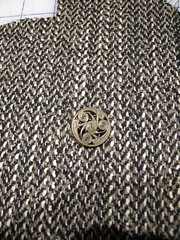
Left: This metal button is interesting but may be too small (even though it's bigger than Vogue thinks it should be) and close in colour to the fabric - it could get lost.
Right: While there's a lot of contrast with the black glass button, it could work.
Help!
Wednesday, May 5, 2010
The Deer Hunter (1978) Directed by Michael Cimino
Michael Cimino is probably the Phil Spector of the movie world. His eccentric behavior is well documented in Stephen Bach's book Final Cut. It is the story of the making of Cimino's follow-up to The Deer Hunter, Heaven's Gate, which ended up bankrupting film studio United Artists. Cimino is interviewed on the extras of this film and even looks like Spector, he is pure EGO.
The Deer Hunter is such a highly rated film. People make lofty claims on it's behalf. David Thomson, probably the greatest living film critic describes The Deer Hunter as one of the great works of American cinema (the picture also won 5 Oscars). This is a film mired in controversy regarding authorship and actuality. Cimino initially claimed the picture was based on his own life experience. Then it was discovered he had never been to Vietnam (or in the army) and had made the whole thing up. Does this knowledge make any difference in watching this picture?
I think The Deer Hunter is provocative, manipulating, features some of the best acting you're likely to see (hello John Cazale!), and also a little clumsy. It's an incredibly good looking film. Watching The Deer Hunter now feels like watching a parody of The Godfather crossed with Apocalypse Now! You've actually seen all this before and maybe better. This is second hand furniture.
Robert De Niro, amongst the method, at times plays Rambo. Meryl Streep looks too smart to be a working class girl. Christopher Walken is so New York upper class choir boy you can't take it so seriously that he ends up playing Russian Roulette in the back streets of Saigon. John Williams' nylon string theme tune accentuates sentimentality. The effects of the Vietnam war on their small town community descends into patriotic fervor.
But The Deer Hunter is still very watchable and at times amazing. It's not perfect but it possesses a haphazard power. But whisper it, for me, the butchered mess of Heaven's Gate is a more fascinating, interesting picture.
Astrid:
Working class characters and war depictions often come with heart-wrenching emotional content in Hollywood. It is justifiable to portray emotions when there is no intellectual content (assumption on the part of Hollywood?), or when there is extreme experiences taking place, such as war. Why are intellect and emotion separated then?
In the case of The Deer Hunter the respected method actors (from middle class homes) get to 'do' emotion. 'Doing emotion' may well have been one big reason why they wanted to act in the first place.
But somehow the acting and the thinking shines through the characters, especially Robert De Niro's Michael. Here is a famous actor giving us his interpretation of lower class small town male-bonding at home and away. Acting as much as he can.
The people who made this film never went to Vietnam, never worked in a steel factory, and were far removed from any kind of poverty. That's usually the case in movie making; that's why it is acting and fiction too. But The Deer Hunter suffers from a falseness. Maybe it comes from too much effort.
Putting the emotional overdrive aside, this film is about friendship and love between men. It's a depiction of homosocial male culture, which blossoms at war time. And here is where my emotional reaction comes in: for the first hour I felt angry and left out because the gang of young men was having a great time at a bar and then getting ready for a wedding and then they had a blast at the wedding. They appeared reckless and sincere with their risk taking in life. And the women were just props. Even the decision to go to Vietnam was a given and they not only had each others' support, but the whole village was rooting for them. I felt completely cast aside. For the second part of the film I was angry because of the cruel war depiction. I belong to the camp of people who do not have to sit through any more war films to know that war is unnecessary. I know life is cruel, basically.
All the while the women of this society were at home with children or at work in their home village. They were left outside of the fun and recklessness, of hunting trips, bar rounds and outside of war. What was there to relate to? How could these divided and gendered groups unite and influence each other? How could they create loving bonds like the men had done amongst themselves? The relationship that prevailed between genders was sexual, material and duty-bound.
Then there is the beautiful and sensual Meryl Streep as a grocery store girl. The film portrays her as different from other women. Yet, what she collects at the end is an emotionally unbalanced Micheal, who has returned from Vietnam. He has seen her boyfriend (and his best friend) Nick lose his mind and shoot himself in Russian roulette. The only way she connects with him is through sorrow and loss.


